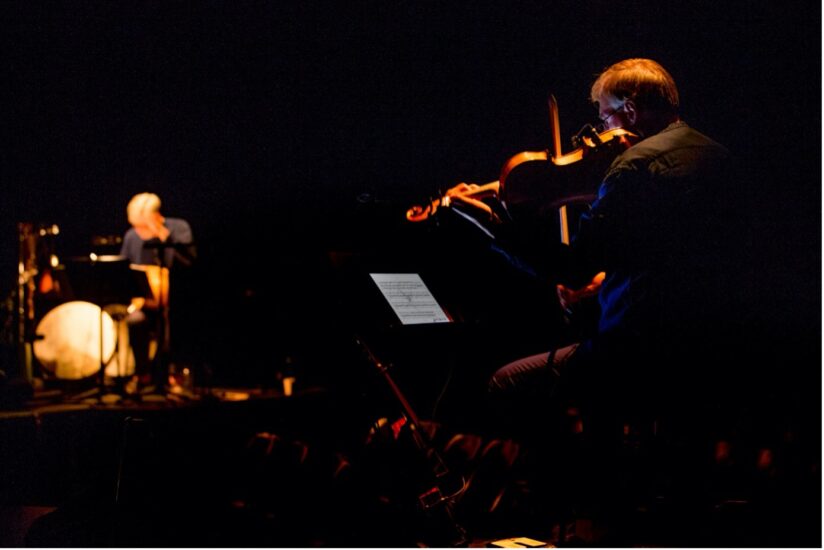Composer
Wim Henderickx, Inner Life (2023)
Musical direction
Diederik Glorieux
Musicians
HERMESensemble
Mezzo soprano: Mireille Capelle
Flute: Karin de Fleyt
Clarinet: Peter Merckx
Viola: Marc Tooten
Cello: Stijn Saveniers
Keyboard: Geert Callaert
Percussion: Gaetan La Mela/ Karel Opsteyn
Nemø ensemble
Mezzo soprano: Esther-Elisabeth Rispens
Electric guitar: Pieter-Jan Vercammen
Saxophone: Arno Roesems
Viola: Anne-Merel Meijer
Cello: Nina Vanhoenacker
Keyboard: Ward de Jonghe
Percussion: Wim Pelgrims
directing and scenography
Aïda Gabriëls
A production by
HERMESensemble and Nemᴓ ensemble, Muziektheater Transparant
Co-production: DE SINGEL, Madam Fortuna, Perpodium
Choir direction
Bart Patoor / Céline Di Maccio: Madam Fortuna
Esther-Elisabeth Rispens / Annelies Gebruers / Heidi De Nef: Municipal Conservatoire Mechelen
Directional assistance
Ferenc Balcaen
Dramaturgy
Kevin Voets
Light design
Peter Quasters
Sound engineer | Sound design
Bart Celis
Soundscape
Jorrit Tamminga
Costumes
Maarten Van Mulken
Thanks to
Madam Fortuna, Luc Nys, Inspiratum, BBC Willibies Antwerp vzw
Supported by
Tax Shelter of the Belgian Federal Government

